
|
It returns for the first time in 70 years. It will brighten up to 4.5 mag in spring. It suddenly brightened in major outburst by 5 mag up to 11.5 mag on July 20 (E. Tamas, Francois Kugel). It brightened again in another major outburst up to 9.4 mag on Nov. 15 (Nick James). Now it is 7.5 mag (Feb. 13, Virgilio Gonano). It will brighten rapidly after this. In the Northern Hemisphere, it will be unobservable in April. In the Southern Hemisphere, it is not observable now, but it will appear in April.
Date(TT) R.A. (2000) Decl. Delta r Elong. m1 Best Time(A, h)
Feb. 17 22 33.88 37 40.7 1.775 1.381 50 8.1 19:08 (124, 17)
Feb. 24 23 8.16 36 50.6 1.726 1.289 47 7.7 19:14 (124, 17)
|
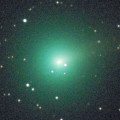
|
It brightened up to 7.4 mag from December to January (Dec. 24, Osamu Miyazaki). Now it is 8.9 mag (Feb. 13, Chris Wyatt). It will fade out rapidly after this. It stays observable in good condition.
Date(TT) R.A. (2000) Decl. Delta r Elong. m1 Best Time(A, h)
Feb. 17 12 42.50 9 49.6 0.511 1.417 139 9.1 2:58 ( 0, 65)
Feb. 24 12 40.93 9 57.7 0.523 1.455 146 9.5 2:29 ( 0, 65)
|

|
Now it is 9.7 mag (Feb. 9, Toshihiko Ikemura, Hirohisa Sato). Fading slowly. In the Northern Hemisphere, it stays observable in good condition. In the Southern Hemisphere, it will be getting lower gradually after this, and it will be unobservable in May.
Date(TT) R.A. (2000) Decl. Delta r Elong. m1 Best Time(A, h)
Feb. 17 17 31.81 -16 4.5 1.399 1.321 64 9.2 5:20 (319, 28)
Feb. 24 17 53.04 -10 38.4 1.354 1.327 66 9.1 5:12 (315, 32)
|

|
Now it is 10.5 mag (Feb. 16, Osamu Miyazaki). It will fade out rapidly after this. It stays observable in good condition.
Date(TT) R.A. (2000) Decl. Delta r Elong. m1 Best Time(A, h)
Feb. 17 4 53.96 16 47.8 0.779 1.422 106 10.1 19:09 ( 0, 72)
Feb. 24 5 15.27 17 11.2 0.824 1.439 104 10.2 19:14 ( 9, 72)
|

|
Now it is 12.1 mag (Feb. 16, Osamu Miyazaki). It stays 13 mag for a while. In the Northern Hemisphere, it stays observable in good condition. In the Southern Hemisphere, it will be getting lower gradually after this, and it will be unobservable in June.
Date(TT) R.A. (2000) Decl. Delta r Elong. m1 Best Time(A, h)
Feb. 17 7 53.41 23 39.2 3.242 4.115 148 12.4 22:05 ( 0, 79)
Feb. 24 7 41.95 25 1.3 3.295 4.088 138 12.4 21:27 ( 0, 80)
|
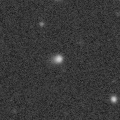
|
It will approach to Sun down to 0.4 a.u. in late September, and it is expected to brighten up to 0 mag. Now it is 12.7 mag (Feb. 15, ATLAS Chile). It will brighten rapidly after this. It stays observable in good condition. At the high light, in the Northern Hemisphere, it will be observable in good condition after the perihelion passage. In the Southern Hemisphere, it will be observable in the low sky before and after the perihelion passage.
Date(TT) R.A. (2000) Decl. Delta r Elong. m1 Best Time(A, h)
Feb. 17 15 10.25 -7 45.2 3.402 3.704 100 12.8 5:20 (358, 47)
Feb. 24 15 8.41 -7 34.1 3.198 3.620 107 12.6 4:56 ( 0, 47)
|

|
First return of a new periodic comet which brightened up to 10 mag in 2001. Now it is 13.1 mag (Feb. 10, Katsumi Yoshimoto). It will fade out rapidly after this. It locates somewhat low in the Northern Hemisphere. In the Southern Hemisphere, it will never be observable after this.
Date(TT) R.A. (2000) Decl. Delta r Elong. m1 Best Time(A, h)
Feb. 17 0 2.32 23 39.6 1.886 1.411 47 12.8 19:08 (102, 27)
Feb. 24 0 13.24 27 44.0 1.905 1.406 45 12.7 19:14 (108, 24)
|
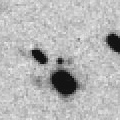
|
Now it is 13.8 mag (Feb. 12, Hiroshi Abe). It will fade out rapidly after this. It will be fainter than 18 mag in May. It stays observable in good condition. Vladimir Bezugly reported it is visible at around 12 mag in the SOHO LASCO images in late January.
Date(TT) R.A. (2000) Decl. Delta r Elong. m1 Best Time(A, h)
Feb. 17 3 24.64 -17 4.3 0.274 0.971 78 13.1 19:08 ( 25, 34)
Feb. 24 4 21.94 -16 22.7 0.241 1.003 86 12.9 19:14 ( 19, 37)
|

|
Now it is 14.0 mag (Feb. 2, Ken-ichi Kadota). It stays 13 mag for a while. It locates somewhat low in the Northern Hemisphere. In the Southern Hemisphere, it stays observable in good condition. It is expected to brighten up to 12.5 mag in spring. At the high light, it will be observable in excellent condition in the Southern Hemisphere, but it will be low in the Northern Hemisphere.
Date(TT) R.A. (2000) Decl. Delta r Elong. m1 Best Time(A, h)
Feb. 17 15 10.64 -28 39.9 2.444 2.705 94 13.2 5:20 (358, 26)
Feb. 24 14 59.57 -30 41.8 2.300 2.699 102 13.0 4:48 ( 0, 24)
|

|
It was observed at 9-10 mag for a long time in 2023. Now it is 12.6 mag (Feb. 2, Chris Wyatt). It stays 14 mag for a while. In the Northern Hemisphere, it will never be observable after this. It locates somewhat low in the Southern Hemisphere. But it will become high in spring.
Date(TT) R.A. (2000) Decl. Delta r Elong. m1 Best Time(A, h)
Feb. 17 23 36.56 -39 29.1 4.578 3.807 34 13.1 19:08 ( 52,-14)
Feb. 24 23 40.96 -39 25.3 4.644 3.863 34 13.2 19:14 ( 55,-19)
|
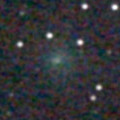
|
Now it is 13.3 mag (Dec. 16, Michael Mattiazzo). Fading rapidly. It will be fainter than 18 mag in April. In the Northern Hemisphere, it is not observable now, but it will be observable soon. In the Southern Hemisphere, it will be getting higher gradually.
Date(TT) R.A. (2000) Decl. Delta r Elong. m1 Best Time(A, h)
Feb. 17 19 57.40 -32 44.1 1.620 0.979 34 13.3 5:20 (306, -7)
Feb. 24 19 46.23 -31 21.5 1.535 1.050 42 14.1 5:12 (309, -1)
|

|
It brightened up to 8 mag from 2022 summer to 2023 spring. Now it is 13.2 mag (Feb. 13, Chris Wyatt). Fading slowly. It will be getting lower gradually after this, and it will be unobservable in May in the Northern Hemisphere, or in June in the Southern Hemisphere.
Date(TT) R.A. (2000) Decl. Delta r Elong. m1 Best Time(A, h)
Feb. 17 5 7.80 4 3.6 4.636 5.026 107 13.5 19:21 ( 0, 59)
Feb. 24 5 6.59 5 2.2 4.806 5.087 100 13.6 19:14 ( 11, 60)
|

|
Now it is 14.7 mag (Feb. 13, Chris Wyatt). It stays observable in good condition.
Date(TT) R.A. (2000) Decl. Delta r Elong. m1 Best Time(A, h)
Feb. 17 8 12.84 21 26.2 5.281 6.179 153 13.5 22:25 ( 0, 76)
Feb. 24 8 10.11 21 28.5 5.340 6.181 145 13.6 21:55 ( 0, 76)
|

|
It returned for the first time in 68 years. It will brighten up to 7.5 mag in summer. Now it is 13.1 mag (Feb. 14, Alan Hale). It will brighten rapidly after this. In the Northern Hemisphere, it will be getting lower gradually. In the Southern Hemisphere, it will be getting lower gradually after this, and it will be unobservable in April. At the high light, it locates low in the Northern Hemisphere, or it is not observable in the Southern Hemisphere.
Date(TT) R.A. (2000) Decl. Delta r Elong. m1 Best Time(A, h)
Feb. 17 2 56.44 -0 27.3 2.271 2.225 74 13.9 19:08 ( 44, 45)
Feb. 24 3 0.52 2 0.4 2.288 2.150 69 13.6 19:14 ( 55, 43)
|

|
Now it is 13.9 mag (Feb. 2, Chris Wyatt). Fading slowly. In the Northern Hemisphere, it will be unobservable in May. In the Southern Hemisphere, it stays observable in good condition.
Date(TT) R.A. (2000) Decl. Delta r Elong. m1 Best Time(A, h)
Feb. 17 8 33.58 -45 31.2 4.058 4.619 119 13.8 22:45 ( 0, 9)
Feb. 24 8 20.23 -44 57.3 4.104 4.656 118 13.9 22:04 ( 0, 10)
|
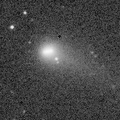
|
Now it is 13.8 mag (Feb. 13, Chris Wyatt). It stays 14 mag for a while. In the Northern Hemisphere, it stays observable in good condition. It stays extremely low in the Southern Hemisphere. But it will become high in winter.
Date(TT) R.A. (2000) Decl. Delta r Elong. m1 Best Time(A, h)
Feb. 17 3 22.29 23 49.9 1.911 2.103 86 13.9 19:08 ( 67, 67)
Feb. 24 3 33.41 24 43.9 1.971 2.087 82 13.9 19:14 ( 75, 63)
|

|
Now it is 14.6 mag (Feb. 13, Chris Wyatt). It stays 14 mag for a while. It locates somewhat low in the Northern Hemisphere. In the Southern Hemisphere, it stays observable in good condition.
Date(TT) R.A. (2000) Decl. Delta r Elong. m1 Best Time(A, h)
Feb. 17 12 13.74 -38 53.0 4.663 5.226 119 14.0 2:30 ( 0, 16)
Feb. 24 12 12.32 -38 45.0 4.574 5.210 125 14.0 2:01 ( 0, 16)
|

|
It approached to Earth down to 0.38 a.u., and brightened up to 8.0 mag in autumn (Sept. 29, Virgilio Gonano). Now it is 14.5 mag (Feb. 9, Toshihiko Ikemura, Hirohisa Sato). Fading rapidly. It will be fainter than 18 mag in May. It stays observable in good condition.
Date(TT) R.A. (2000) Decl. Delta r Elong. m1 Best Time(A, h)
Feb. 17 8 1.06 -6 8.8 1.019 1.916 145 14.0 22:13 ( 0, 49)
Feb. 24 7 59.62 -4 26.7 1.109 1.978 140 14.4 21:45 ( 0, 51)
|

|
It brightened up to 7.8 mag in late July (July 20, Thomas Lehmann). Now it is 15.3 mag (Feb. 5, Thomas Lehmann). Fading gradually. It stays observable in good condition.
Date(TT) R.A. (2000) Decl. Delta r Elong. m1 Best Time(A, h)
Feb. 17 14 47.73 4 33.9 2.530 2.991 108 14.3 5:03 ( 0, 59)
Feb. 24 14 37.71 6 43.1 2.474 3.061 117 14.3 4:26 ( 0, 62)
|

|
It brightened up to 8.3 mag in 2021-2022 winter (Jan. 6, 2022, Toshiyuki Takahashi). Now it is 15.7 mag (Feb. 10, ATLAS South Africa). It stays 15 mag for a while. In the Northern Hemisphere, it will be unobservable in May. In the Southern Hemisphere, it stays observable in good condition.
Date(TT) R.A. (2000) Decl. Delta r Elong. m1 Best Time(A, h)
Feb. 17 11 12.78 -53 45.8 6.905 7.333 112 14.4 1:29 ( 0, 1)
Feb. 24 11 8.51 -54 0.0 6.898 7.378 115 14.4 0:57 ( 0, 1)
|

|
First return of a new periodic comet which was discovered in 2011, half a year after the perihelion passage. It is expected to brighten up to 14 mag in spring. Now it is 15.3 mag (Feb. 9, Toshihiko Ikemura, Hirohisa Sato). Brightening slowly. It stays observable in good condition.
Date(TT) R.A. (2000) Decl. Delta r Elong. m1 Best Time(A, h)
Feb. 17 8 1.78 6 37.1 0.680 1.615 150 15.2 22:14 ( 0, 61)
Feb. 24 7 53.11 4 36.7 0.658 1.561 141 15.0 21:38 ( 0, 59)
|

|
It brightened up to 12.1 mag in 2023 spring (May 20, Jose Guilherme de S. Aguiar). Now it is 15.0 mag (Feb. 13, Chris Wyatt). Fading slowly. In the Northern Hemisphere, it is not observable now. In the Southern Hemisphere, it stays observable in good condition.
Date(TT) R.A. (2000) Decl. Delta r Elong. m1 Best Time(A, h)
Feb. 17 3 56.60 -67 4.0 4.178 4.096 78 15.2 19:08 ( 6,-12)
Feb. 24 4 2.37 -64 33.8 4.218 4.138 78 15.2 19:14 ( 9,-11)
|

|
It is expected to brighten up to 12 mag in early summer. Now it is 15.2 mag (Feb. 16, ATLAS-HKO, Haleakala). It will brighten rapidly after this. It locates somewhat low in the Northern Hemisphere. In the Southern Hemisphere, it will be unobservable in April. At the high light, it is not observable in the Southern Hemisphere, or it locates low in the Northern Hemisphere.
Date(TT) R.A. (2000) Decl. Delta r Elong. m1 Best Time(A, h)
Feb. 17 2 6.35 -12 26.9 2.226 1.937 60 15.5 19:08 ( 48, 28)
Feb. 24 2 10.35 -8 40.1 2.232 1.858 55 15.2 19:14 ( 57, 26)
|
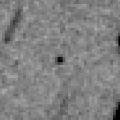
|
Now it is 14.7 mag (Feb. 12, Yukihiro Sugiyama). It will fade out rapidly after this. It will be fainter than 18 mag in May. In the Northern Hemisphere, it stays observable in good condition. It locates somewhat low in the Southern Hemisphere. But it will become high in spring.
Date(TT) R.A. (2000) Decl. Delta r Elong. m1 Best Time(A, h)
Feb. 17 7 26.46 38 18.8 0.766 1.636 137 15.4 21:40 (180, 87)
Feb. 24 7 30.65 37 27.1 0.791 1.629 132 15.4 21:17 (180, 88)
|
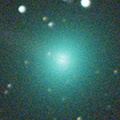
|
It approached to Earth down to 0.2 a.u. in early November, and brightened up to 6.2 mag (Nov. 11, Marco Goiato). Now it is 14.4 mag (Feb. 5, Thomas Lehmann). Fading gradually. It will be fainter than 18 mag in May. In the Northern Hemisphere, it will never be observable after this. It locates somewhat low in the Southern Hemisphere.
Date(TT) R.A. (2000) Decl. Delta r Elong. m1 Best Time(A, h)
Feb. 17 0 8.65 -43 43.7 2.640 2.017 41 15.4 19:08 ( 45,-12)
Feb. 24 0 18.03 -43 59.7 2.736 2.106 41 15.7 19:14 ( 47,-16)
|
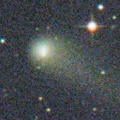
|
It brightened up to 11.1 mag in early 2022 (Mar. 31, 2022, F. Kugel, J.-G. Bosch, J. Nicolas). Now it is 15.3 mag (Feb. 9, Toshihiko Ikemura, Hirohisa Sato). It stays 16 mag for a while. In the Northern Hemisphere, it stays observable in good condition. It locates somewhat low in the Southern Hemisphere.
Date(TT) R.A. (2000) Decl. Delta r Elong. m1 Best Time(A, h)
Feb. 17 17 33.64 20 56.5 6.715 6.497 73 15.5 5:20 (283, 54)
Feb. 24 17 37.11 21 46.0 6.679 6.536 77 15.5 5:12 (286, 58)
|
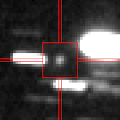
|
It is expected to brighten up to 12.5 mag in summer. Now it is 15.8 mag (Feb. 7, Thomas Lehmann). Brightening gradually. In the Northern Hemisphere, it is not observable now. In the Southern Hemisphere, it stays observable in good condition. Around the high light, it is observable in good condition in the Southern Hemisphere, but it locates very low in the Northern Hemisphere.
Date(TT) R.A. (2000) Decl. Delta r Elong. m1 Best Time(A, h)
Feb. 17 15 40.89 -67 24.0 3.790 3.753 80 15.6 5:20 (356,-13)
Feb. 24 15 53.61 -68 35.3 3.674 3.699 83 15.5 5:12 (357,-14)
|
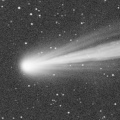
|
It approached to Sun down to 0.23 a.u. and brightened up to 2.5 mag in mid September (Sept. 18, Juan Jose Gonzalez). Now it is 17.0 mag (Feb. 13, ATLAS South Africa). It will fade out rapidly after this. It will be fainter than 18 mag in May. In the Northern Hemisphere, it will be unobservable soon. But it will be observable again in February. In the Southern Hemisphere, it stays observable in good condition. Thomas Lehmann reported it was bright as 14.1 mag on Feb. 4.
Date(TT) R.A. (2000) Decl. Delta r Elong. m1 Best Time(A, h)
Feb. 17 9 29.63 -55 22.2 2.394 2.912 112 15.5 23:40 ( 0, 0)
Feb. 24 9 8.44 -53 31.8 2.457 3.006 114 15.7 22:51 ( 0, 2)
|

|
The condition is bad in this apparition. It brightens up to 10 mag in early summer, however, it is not observable at all. Brightening rapidly. It will never be observable after this.
Date(TT) R.A. (2000) Decl. Delta r Elong. m1 Best Time(A, h)
Feb. 17 23 21.40 -12 14.7 2.466 1.576 20 16.0 19:08 ( 76, -1)
Feb. 24 23 39.01 -10 7.6 2.427 1.517 18 15.6 19:14 ( 80, -3)
|

|
Now it is 15.9 mag (Feb. 12, Hirohisa Sato). It stays 16 mag for a while. It will be getting lower gradually after this, and it will be unobservable in May in the Northern Hemisphere, or in June in the Southern Hemisphere.
Date(TT) R.A. (2000) Decl. Delta r Elong. m1 Best Time(A, h)
Feb. 17 4 28.97 -7 41.0 6.686 6.855 95 15.8 19:08 ( 9, 47)
Feb. 24 4 29.92 -6 57.9 6.756 6.826 89 15.8 19:14 ( 21, 46)
|
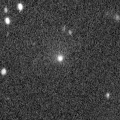
|
Very large comet. It is expected to brighten up to 13 mag in 2031. Now it is 16.6 mag (Jan. 23, ATLAS Chile). It stays 16 mag for a while. In the Northern Hemisphere, it is not observable now. In the Southern Hemisphere, it stays observable in good condition. In the Northern Hemisphere, it is not observable until 2030.
Date(TT) R.A. (2000) Decl. Delta r Elong. m1 Best Time(A, h)
Feb. 17 2 53.73 -63 29.0 16.968 16.685 71 15.9 19:08 ( 13,-11)
Feb. 24 2 55.17 -63 10.5 16.954 16.660 71 15.9 19:14 ( 17,-13)
|
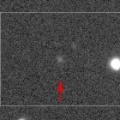
|
It will be observable at 15-16 mag from 2024 to 2025. Now it is 17.1 mag (Feb. 11, Toshihiko Ikemura, Hirohisa Sato). It stays 16 mag for a while. It stays observable in good condition.
Date(TT) R.A. (2000) Decl. Delta r Elong. m1 Best Time(A, h)
Feb. 17 13 19.17 1 55.3 2.954 3.660 129 16.0 3:35 ( 0, 57)
Feb. 24 13 18.05 2 12.0 2.863 3.645 136 15.9 3:06 ( 0, 57)
|
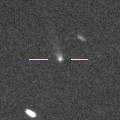
|
Now it is 16.4 mag (Feb. 5, ATLAS Chile). It stays 16 mag for a while. In the Northern Hemisphere, it will be unobservable in March. It locates somewhat low in the Southern Hemisphere. But it will become high in summer. The brightness evolution is slower than originally expected.
Date(TT) R.A. (2000) Decl. Delta r Elong. m1 Best Time(A, h)
Feb. 17 1 45.86 -30 42.4 3.628 3.172 55 16.1 19:08 ( 40, 11)
Feb. 24 1 49.46 -30 44.5 3.655 3.138 51 16.0 19:14 ( 45, 7)
|

|
Now it is 16.1 mag (Feb. 11, ATLAS-MLO, Mauna Loa). It will fade out rapidly after this. It will be fainter than 18 mag in April. In the Northern Hemisphere, it will be getting lower gradually. In the Southern Hemisphere, it will be unobservable in March.
Date(TT) R.A. (2000) Decl. Delta r Elong. m1 Best Time(A, h)
Feb. 17 1 46.90 15 45.2 2.062 1.839 63 16.1 19:08 ( 78, 44)
Feb. 24 1 58.09 18 44.1 2.148 1.856 59 16.3 19:14 ( 85, 41)
|

|
Now it is 16.8 mag (Feb. 12, ATLAS-HKO, Haleakala). It stays 16 mag for a while. It locates somewhat low in the Northern Hemisphere. But it will become high in spring. In the Southern Hemisphere, it stays observable in good condition.
Date(TT) R.A. (2000) Decl. Delta r Elong. m1 Best Time(A, h)
Feb. 17 17 33.61 -14 29.8 1.684 1.539 64 16.4 5:20 (318, 29)
Feb. 24 17 55.55 -14 16.8 1.640 1.532 65 16.2 5:12 (317, 29)
|

|
Now it is 15.1 mag (Jan. 23, Ken-ichi Kadota). Fading rapidly. It will be fainter than 18 mag soon. It locates somewhat low.
Date(TT) R.A. (2000) Decl. Delta r Elong. m1 Best Time(A, h)
Feb. 17 19 29.22 -9 39.0 1.934 1.286 36 16.2 5:20 (292, 13)
Feb. 24 19 50.63 -7 40.4 1.961 1.334 38 17.6 5:12 (290, 14)
|
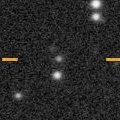
|
Now it is 15.8 mag (Feb. 13, Yukihiro Sugiyama). Fading gradually. It will be fainter than 18 mag in May. It stays observable in good condition.
Date(TT) R.A. (2000) Decl. Delta r Elong. m1 Best Time(A, h)
Feb. 17 8 45.34 -15 10.7 0.849 1.762 147 16.3 22:57 ( 0, 40)
Feb. 24 8 41.02 -16 0.5 0.857 1.754 143 16.4 22:26 ( 0, 39)
|
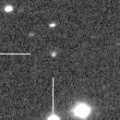
|
Now it is 16.4 mag (Feb. 11, Toshihiko Ikemura, Hirohisa Sato). It stays 16 mag for a while. It locates somewhat low in the Northern Hemisphere. But it will become high in summer. In the Southern Hemisphere, it stays observable in good condition.
Date(TT) R.A. (2000) Decl. Delta r Elong. m1 Best Time(A, h)
Feb. 17 14 7.21 -28 38.9 3.019 3.445 107 16.5 4:23 ( 0, 26)
Feb. 24 14 10.63 -28 47.7 2.931 3.445 113 16.4 3:59 ( 0, 26)
|

|
It brightened up to 13 mag in early 2023. It stays 17 mag for a while. It stays extremely low in the Northern Hemisphere. In the Southern Hemisphere, it stays observable in good condition.
Date(TT) R.A. (2000) Decl. Delta r Elong. m1 Best Time(A, h)
Feb. 17 16 33.90 -47 57.4 3.986 3.850 74 16.4 5:20 (345, 5)
Feb. 24 16 35.93 -47 52.3 3.941 3.910 80 16.4 5:12 (348, 6)
|
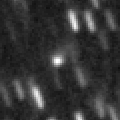
|
Now it is 17.4 mag (Feb. 14, ATLAS South Africa). It stays 16 mag for a while. It stays extremely low in the Northern Hemisphere. In the Southern Hemisphere, it stays observable in good condition.
Date(TT) R.A. (2000) Decl. Delta r Elong. m1 Best Time(A, h)
Feb. 17 16 54.75 -45 57.9 6.059 5.821 71 16.6 5:20 (341, 5)
Feb. 24 16 53.23 -46 41.1 5.920 5.798 78 16.5 5:12 (345, 6)
|

|
Now it is 16.9 mag (Feb. 7, Toshihiko Ikemura, Hirohisa Sato). It stays 17 mag for a while. It will be unobservable in May.
Date(TT) R.A. (2000) Decl. Delta r Elong. m1 Best Time(A, h)
Feb. 17 4 36.82 29 6.7 4.656 4.991 104 16.8 19:08 ( 33, 83)
Feb. 24 4 39.18 28 31.7 4.748 4.977 97 16.8 19:14 ( 61, 78)
|

|
Now it is 16.5 mag (Jan. 31, Thomas Lehmann). It will fade out rapidly after this. It will be fainter than 18 mag in April. It locates somewhat low in the Northern Hemisphere. In the Southern Hemisphere, it will be unobservable in March.
Date(TT) R.A. (2000) Decl. Delta r Elong. m1 Best Time(A, h)
Feb. 17 1 10.56 11 16.4 2.637 2.193 53 16.8 19:08 ( 79, 34)
Feb. 24 1 25.08 12 32.4 2.714 2.210 49 17.0 19:14 ( 84, 31)
|
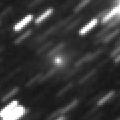
|
Very far object. Now it is 17.0 mag (Jan. 27, ATLAS Chile). It stays 17 mag for a while. In the Northern Hemisphere, it is not observable now. In the Southern Hemisphere, it stays observable in good condition.
Date(TT) R.A. (2000) Decl. Delta r Elong. m1 Best Time(A, h)
Feb. 17 2 11.94 -69 15.9 10.635 10.325 69 16.8 19:08 ( 14,-18)
Feb. 24 2 12.48 -68 28.6 10.639 10.327 69 16.8 19:14 ( 17,-20)
|

|
Now it is 17.5 mag (Feb. 16, ATLAS Chile). It stays 17 mag for a while. In the Northern Hemisphere, it is not observable now, but it will appear in March. In the Southern Hemisphere, it stays observable in good condition.
Date(TT) R.A. (2000) Decl. Delta r Elong. m1 Best Time(A, h)
Feb. 17 10 41.32 -83 13.5 1.922 2.072 84 17.1 1:06 ( 0,-28)
Feb. 24 7 37.08 -80 41.7 1.833 2.039 87 16.9 21:11 ( 0,-25)
|
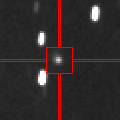
|
Now it is 16.9 mag (Feb. 17, ATLAS Chile). It stays 17 mag for a while. In the Northern Hemisphere, it will be unobservable in April. In the Southern Hemisphere, it stays observable in good condition.
Date(TT) R.A. (2000) Decl. Delta r Elong. m1 Best Time(A, h)
Feb. 17 4 46.21 -35 45.3 7.433 7.536 92 17.0 19:08 ( 2, 19)
Feb. 24 4 47.20 -34 53.7 7.469 7.513 88 17.0 19:14 ( 9, 20)
|
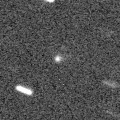
|
Now it is 17.0 mag (Feb. 9, Toshihiko Ikemura, Hirohisa Sato). Brightening slowly. It will be unobservable in May.
Date(TT) R.A. (2000) Decl. Delta r Elong. m1 Best Time(A, h)
Feb. 17 2 5.50 5 46.0 2.667 2.403 63 17.1 19:08 ( 63, 42)
Feb. 24 2 14.89 6 56.0 2.710 2.367 59 17.0 19:14 ( 69, 38)
|
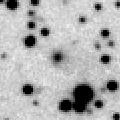
|
Now it is 17.0 mag (Feb. 13, ATLAS-HKO, Haleakala). It stays 17 mag for a while. It will be unobservable in April in the Southern Hemisphere, or in June in the Northern Hemisphere.
Date(TT) R.A. (2000) Decl. Delta r Elong. m1 Best Time(A, h)
Feb. 17 4 33.81 40 1.0 6.379 6.696 104 17.0 19:08 (143, 84)
Feb. 24 4 35.74 39 49.0 6.485 6.698 98 17.1 19:14 (119, 79)
|
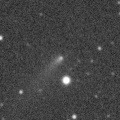
|
It brightened very rapidly up to 14.9 mag in early summer (July 13, Taras Prystavski). Now it is 17.2 mag (Jan. 16, Ken-ichi Kadota). Fading gradually. It will be fainter than 18 mag in April. In the Northern Hemisphere, it stays observable in good condition. In the Southern Hemisphere, it will be getting lower gradually.
Date(TT) R.A. (2000) Decl. Delta r Elong. m1 Best Time(A, h)
Feb. 17 14 46.12 17 11.3 2.275 2.782 110 17.1 5:02 ( 0, 72)
Feb. 24 14 36.86 21 8.2 2.223 2.835 118 17.2 4:25 ( 0, 76)
|

|
Now it is 17.5 mag (Jan. 29, D. Buczynski). It stays 18 mag for a while. In the Northern Hemisphere, it stays observable in good condition.
Date(TT) R.A. (2000) Decl. Delta r Elong. m1 Best Time(A, h)
Feb. 17 6 45.54 19 57.1 1.658 2.443 133 17.3 20:59 ( 0, 75)
Feb. 24 6 45.92 20 41.6 1.715 2.434 126 17.3 20:32 ( 0, 76)
|

|
Now it is 17.1 mag (Feb. 12, Yukihiro Sugiyama). It stays 17 mag for a while. In the Northern Hemisphere, it will be getting lower gradually after this, and it will be unobservable in June. In the Southern Hemisphere, it stays observable in good condition.
Date(TT) R.A. (2000) Decl. Delta r Elong. m1 Best Time(A, h)
Feb. 17 7 48.89 -9 17.5 3.865 4.676 141 17.3 22:01 ( 0, 46)
Feb. 24 7 46.38 -9 3.0 3.873 4.637 136 17.3 21:31 ( 0, 46)
|
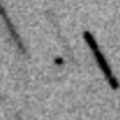
|
Now it is 17.5 mag (Feb. 12, Toshihiko Ikemura, Hirohisa Sato). It will brighten rapidly after this. It will be getting lower gradually after this, and it will be unobservable in April in the Northern Hemisphere, or in June in the Southern Hemisphere. It will brighten up to 11 mag in summer. But it is not observable at the high light.
Date(TT) R.A. (2000) Decl. Delta r Elong. m1 Best Time(A, h)
Feb. 17 2 22.83 -6 36.5 3.107 2.839 65 17.5 19:08 ( 48, 35)
Feb. 24 2 28.09 -5 53.1 3.111 2.755 60 17.4 19:14 ( 55, 31)
|
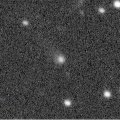
|
Now it is 17.6 mag (Feb. 5, ATLAS South Africa). It stays 18 mag for a while. In the Northern Hemisphere, it will never be observable after this. In the Southern Hemisphere, it stays observable in good condition.
Date(TT) R.A. (2000) Decl. Delta r Elong. m1 Best Time(A, h)
Feb. 17 5 8.56 -70 26.6 3.886 3.910 84 17.4 19:19 ( 0,-15)
Feb. 24 4 50.93 -69 7.5 3.925 3.930 83 17.4 19:14 ( 4,-14)
|

|
Now it is 17.1 mag (Feb. 7, Toshihiko Ikemura, Hirohisa Sato). It stays 17 mag for a while. It locates somewhat low in the Northern Hemisphere. In the Southern Hemisphere, it stays observable in good condition.
Date(TT) R.A. (2000) Decl. Delta r Elong. m1 Best Time(A, h)
Feb. 17 15 41.02 -28 15.7 3.056 3.178 87 17.5 5:20 (351, 26)
Feb. 24 15 47.04 -28 40.5 2.955 3.174 93 17.4 5:12 (354, 26)
|

|
Now it is 17.2 mag (Feb. 9, Jean-Claude Merlin). It stays 17 mag for a while. It stays observable in good condition.
Date(TT) R.A. (2000) Decl. Delta r Elong. m1 Best Time(A, h)
Feb. 17 10 50.47 4 32.8 4.929 5.889 165 17.5 1:07 ( 0, 59)
Feb. 24 10 46.01 5 44.5 4.868 5.852 173 17.4 0:35 ( 0, 61)
|
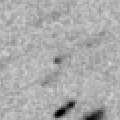
|
Now it is 17.4 mag (Jan. 10, ATLAS Chile). It will fade out rapidly after this. It will be fainter than 18 mag in March. It stays observable in good condition.
Date(TT) R.A. (2000) Decl. Delta r Elong. m1 Best Time(A, h)
Feb. 17 12 14.97 2 2.4 1.268 2.152 144 17.5 2:31 ( 0, 57)
Feb. 24 12 12.12 1 41.7 1.235 2.161 152 17.5 2:01 ( 0, 57)
|
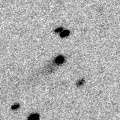
|
Now it is 17.3 mag (Feb. 3, ATLAS-MLO, Mauna Loa). It stays 18 mag for a while. It stays observable in good condition.
Date(TT) R.A. (2000) Decl. Delta r Elong. m1 Best Time(A, h)
Feb. 17 12 13.57 17 50.5 8.591 9.435 147 17.5 2:30 ( 0, 73)
Feb. 24 12 9.59 18 24.9 8.555 9.450 153 17.5 1:58 ( 0, 73)
|
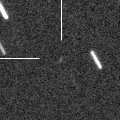
|
Now it is 17.1 mag (Feb. 1, ATLAS Chile). Fading gradually. It will be fainter than 18 mag in March. It locates somewhat low in the Northern Hemisphere. In the Southern Hemisphere, it stays observable in good condition.
Date(TT) R.A. (2000) Decl. Delta r Elong. m1 Best Time(A, h)
Feb. 17 8 37.21 -36 9.9 1.665 2.401 127 17.6 22:47 ( 0, 19)
Feb. 24 8 11.37 -36 19.5 1.746 2.442 124 17.8 21:54 ( 0, 19)
|

|
Now it is 17.5 mag (Feb. 9, Jean-Claude Merlin). It stays 17 mag for a while. In the Northern Hemisphere, it is not observable now, but it will appear in March. In the Southern Hemisphere, it stays observable in good condition. It stays 15 mag for a long time from late 2024 to early 2026.
Date(TT) R.A. (2000) Decl. Delta r Elong. m1 Best Time(A, h)
Feb. 17 6 10.43 -58 57.2 5.437 5.614 95 17.7 20:22 ( 0, -4)
Feb. 24 6 6.36 -57 18.7 5.405 5.574 94 17.6 19:51 ( 0, -2)
|

|
It brightened up to 14.1 mag in 2022 spring (Mar. 22, 2022, Chris Wyatt). Now it is 17.2 mag (Jan. 13, ATLAS-MLO, Mauna Loa). It stays 18 mag for a while. It will be unobservable in March.
Date(TT) R.A. (2000) Decl. Delta r Elong. m1 Best Time(A, h)
Feb. 17 1 19.19 4 41.2 6.818 6.268 52 17.7 19:08 ( 72, 32)
Feb. 24 1 20.86 5 19.2 6.960 6.316 46 17.7 19:14 ( 78, 26)
|
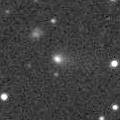
|
Now it is 17.2 mag (Feb. 11, ATLAS Chile). Fading slowly. It will be fainter than 18 mag in March. In the Northern Hemisphere, it will be getting lower gradually. It locates somewhat low in the Southern Hemisphere.
Date(TT) R.A. (2000) Decl. Delta r Elong. m1 Best Time(A, h)
Feb. 17 3 33.78 9 2.1 3.262 3.341 85 17.7 19:08 ( 40, 58)
Feb. 24 3 39.23 9 43.7 3.377 3.357 80 17.8 19:14 ( 51, 55)
|

|
It approached to Earth down to 0.29 a.u. in early last February, and it brightened up to 4.5 mag (Feb. 1, Juan Jose Gonzalez). Now it is 17.7 mag (Feb. 7, Thomas Lehmann). Fading slowly. It will be fainter than 18 mag in March. In the Northern Hemisphere, it will never be observable after this. In the Southern Hemisphere, it stays observable in good condition.
Date(TT) R.A. (2000) Decl. Delta r Elong. m1 Best Time(A, h)
Feb. 17 2 59.96 -53 21.1 5.323 5.095 71 17.7 19:08 ( 17, -2)
Feb. 24 3 0.33 -52 16.7 5.428 5.161 69 17.8 19:14 ( 22, -3)
|

|
Now it is 17.9 mag (Feb. 7, D. Buczynski). Fading gradually. It will be fainter than 18 mag soon. In the Northern Hemisphere, it stays observable in good condition. In the Southern Hemisphere, it will never be observable after this.
Date(TT) R.A. (2000) Decl. Delta r Elong. m1 Best Time(A, h)
Feb. 17 4 23.59 62 28.1 1.641 2.108 103 17.8 19:08 (173, 62)
Feb. 24 4 48.66 58 57.6 1.707 2.136 101 18.0 19:14 (168, 65)
|
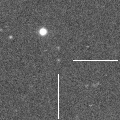
|
Far asteroid moving along a cometary orbit. It brightens up to 18 mag from 2024 to 2025. It stays 18 mag for a while. In the Northern Hemisphere, it stays observable in good condition. It stays extremely low in the Southern Hemisphere.
Date(TT) R.A. (2000) Decl. Delta r Elong. m1 Best Time(A, h)
Feb. 17 8 8.89 50 26.9 8.036 8.771 135 17.9 22:22 (180, 75)
Feb. 24 8 2.36 50 6.7 8.099 8.768 130 18.0 21:48 (180, 75)
|
|
![]()
 26P/Grigg-Skjellerup
26P/Grigg-Skjellerup 150P/LONEOS
150P/LONEOS C/2022 T1 ( Lemmon )
C/2022 T1 ( Lemmon ) C/2021 Y1 ( ATLAS )
C/2021 Y1 ( ATLAS ) C/2023 F3 ( ATLAS )
C/2023 F3 ( ATLAS ) C/2022 U3 ( Bok )
C/2022 U3 ( Bok ) 471P/2023 KF3
471P/2023 KF3 C/2019 E3 ( ATLAS )
C/2019 E3 ( ATLAS ) C/2024 A2 ( ATLAS )
C/2024 A2 ( ATLAS ) C/2022 R6 ( PanSTARRS )
C/2022 R6 ( PanSTARRS ) 30P/Reinmuth 1
30P/Reinmuth 1 C/2021 S4 ( Tsuchinshan )
C/2021 S4 ( Tsuchinshan ) C/2023 K1 ( ATLAS )
C/2023 K1 ( ATLAS ) 478P/2023 Y3 ( ATLAS )
478P/2023 Y3 ( ATLAS ) C/2023 T3 ( Fuls )
C/2023 T3 ( Fuls ) C/2023 R2 ( PanSTARRS )
C/2023 R2 ( PanSTARRS ) C/2022 A3 ( Lemmon-ATLAS )
C/2022 A3 ( Lemmon-ATLAS ) 299P/Catalina-PanSTARRS
299P/Catalina-PanSTARRS C/2023 H5 ( Lemmon )
C/2023 H5 ( Lemmon ) 216P/LINEAR
216P/LINEAR C/2020 F2 ( ATLAS )
C/2020 F2 ( ATLAS ) C/2022 V2 ( Lemmon )
C/2022 V2 ( Lemmon ) C/2024 A1 ( ATLAS )
C/2024 A1 ( ATLAS ) C/2020 Y2 ( ATLAS )
C/2020 Y2 ( ATLAS ) 170P/Christensen
170P/Christensen C/2022 E3 ( ZTF )
C/2022 E3 ( ZTF ) C/2023 T2 ( Borisov )
C/2023 T2 ( Borisov ) (468861) 2013 LU28
(468861) 2013 LU28![]()
























































